Pu’er, commonly known as pu-erh tea is another of China’s exceptional treasures which has only recently been discovered by the Western world. Also known as aged or vintage tea, pu-erh has many unique qualities.
So much that Westerners often liken this exquisite tea to fine wine.
This is hardly surprising when we consider that they have many things in common. Just like the world’s great wine regions, the production of pu-erh tea is highly regulated to guarantee authenticity and highest quality.
Contents
Pu-Erh Tea Origins
But it’s not only the aged tea from Yunnan province that can be referred to as pu-erh Tea. The counties along the Lancang River are also famous for the growing and harvesting of the leaves—with each estate producing its unique and special type. Varieties range from the strong tips and stems of plants cultivated in the estates, to the most prized soft and large silver leaves picked from trees and plants that grow wild on the hillsides.
Some trees are believed to be over 1,000 years old, and their leaves are known as “wild arbor”. Almost all pu-erh leaves are harvested sent to Pu’er city. Here, every manufacturer is tasked with the blending process in order to produce unique and time-honored recipes.
Paradoxically, the compressed and aged Pu’er has in the past been viewed by the Yunnan locals strictly as an export commodity. The locals themselves preferred the younger green varieties. However, this has changed, and pu-erh is now enjoyed just as much there as in other areas around the world.
History can be blamed for the considerable amount of confusion surrounding the naming of Chinese teas. For instance, what is known as Chinese Black Teas in the West, are referred to as Red Teas in China. The actual Black Teas, as they’re called in China, are the post-fermented, aka aged teas. Of these, the pu-erh tea family is the most famous.
Types of Pu-Erh Tea
Pu-erh tea is made up of two completely different categories – “ripe pu-erh tea” and “raw pu-erh tea.” If you’re new to this tea, you’ll probably tend towards the ripe pu-erh tea. Collectors and experts, on the other hand, come to appreciate the raw pu-erh tea more. The main difference lies in the processing of the two varieties.
Ripe vs Raw Pu-Erh
Dating back to between 1973 and 1974, the ripe pu-erh has a much shorter history than the raw variety. It is developed from the mold fermentation process used for the ancient dark teas such as the Fuzhuan Cha.
As the tea undergoes fermentation, the natural mold produces an organic acid. The acid reduces the pH of the tea and leads to complete fermentation within a shorter time period. The tea leaves’ color then changes to dark brown to produce a mellow taste with a thick body. Note that a good quality ripe pu-erh exhibits a flavor like dried Chinese dates. Generally speaking, ripe pu-erh is more popular on the overseas markets.
Raw pu-erh tea refers to the semi-fermented tea with its tea leaf a yellowish green in color. It exhibits a long history and was the tea traded through The Ancient Tea Route. This tea is extremely well sought after by collectors and tea experts the world over.
Organic Pu-Erh Tea
As the name suggests, organic pu-erh tea is grown without the use of fertilizers or chemical pesticides. The soil is basically enriched with natural compost. Moisture is retained by a layer of mulch which also provides extra nutrients as it breaks down. It is this labor-intensive growing method that produces superior quality tea.
Organic pu-erh tea is rich in health-promoting catechins and polyphenols, which also improve its flavor. Polyphenols and catechins are the antioxidants responsible for most of the health benefits associated with tea. Scientific studies have long since established that higher quality teas contain far more of these beneficial compounds than lesser teas.
Organic tea is considered best for the tea farmer, too. Tea plants have a lifespan of more than 100 years, and they benefit enormously from natural farming methods. The organic methodology helps them to remain strong and healthy throughout their lifespan. In return, farmers experience lower costs when it comes to replacing poor tea plants.
Pu-Erh Tea Production
At the risk of adding to the confusion, you should know that comes in two varieties—Black (Shou) and Green (Sheng). Which tea is which depends on how the leaves are processed. Both the black and green varieties undergo similar withering steps. These steps include the “kill green” step, then to forming or rolling. The final steps are called drying and shaping or steaming.
The black variety will also include the additional step of cooking, also known as heaping or piling. This basically refers to heaping of the leaves in a pile to promote fermentation. Both varieties are then stored for aging.
Pu-erh teas are different compared to the other teas. Their unique flavor is a result of the leaves’ sun-drying technique. This is usually carried out after the Rolling/Forming step. Heaping the leaves into a pile initiates the natural process of fermentation. The enzymatic breakdown creates heat to “cook” the leaves. Eventually, the process adds a highly-prized complexity, smoothness, and depth to the black pu-Erh tea.
Whereas green pu-erh tea has existed for centuries, the black pu-erh tea production first developed in 1973. Which explains why black pu-erh didn’t appear on the global markets until 1975. After processing, both black and green teas are left loose or compressed to form the shapes below:
- Brick Tea, also called, Juan Cha.
- Cake Tea, also called, Beeng Cha.
- Bell Shape, also known, as Toa Cha.
- Maw Gu Toaw also referred to as Mushroom Shape.
Immediately after forming, the tea is kept in moist and warm cellars to allows for the subtle chemical processes. This allows it to mature further and mellow over time. Pu-erh is usually ready for drinking after three months. However, it begins to develop its unique aged taste after five years.
Pu-Erh Vs. Oolong Vs. Black Tea
Most people seem surprised that all teas are made from leaves of the same species. This includes green, white, oolong, pu-erh, and black tea. It is the weather conditions and the soil which contribute to each tea’s individual taste. The significant difference between the types of tea is due to the processing of the leaves.
Oolong Tea
This type of tea is semi-oxidized, thus placing it midway between black and green tea. This accords oolong tea the complexity and body of black tea, but with a brighter and fresher taste.
Black Tea
Black teas are usually fully oxidized. They can brew to a liquor from reddish brown to dark brown in color. Caffeine content can range from 40-60mgs per 8 Oz cup. Black tea is the most popular tea in the Western world.
What Makes Pu-Erh Different?
Pu-erh teas are fermented and aged. The aged teas are cherished throughout Asia owing to their medicinal benefits. These benefits can range from reducing cholesterol to curing hangovers, help with weight loss, and much more.
Pu-erh tea can appear darker than black tea and is always very smooth to taste. It’s a naturally fermented tea, and good storage enhances the flavor. In other words, the longer the tea is stored, the better the flavor.
Black pu-erh teas contain about 60-70mgs of caffeine per 8 Oz cup. Green pu-erh yields around 30-40mgs of caffeine for a similar sized serving.
Pu-Erh Tea Oxidation
In Western markets, pu-erh teas are collectively classified as post-fermentation teas. In the Eastern markets, they’re classified as black teas. However, there exists a general confusion owing to the improper use of the terms “fermentation” and “oxidation.”
Black tea is sometimes referred to as “fully fermented.” This is incorrect as the oxidation process does not entail microbial activity.
It’s helpful to note that green teas are unoxidized. Black teas are fully oxidized. Oolong teas are oxidized to varying degrees.
All Pu’er teas go through some oxidation during the sun drying process. This results in the tea becoming either fully or partially fermented. The full fermentation phase is the same as composting and produces the renowned Shu (ripened) Pu’er. Partially fermented Pu-erh is partially oxidized and undergoes a process of natural aging. This produces the Sheng or raw pu’er.
Best Pu-Erh Tea Brand Reviews
A good brand is often the sign of a quality product. Pu-erh tea is no different. By extending your brand awareness, you can ensure you get the perfect tea for your budget and taste. To help you choose the best brand of pu-erh tea for you, here’s a brief rundown of some of my absolute favorites:
Numi
A privately owned enterprise that cares for the people and the environment around them, while being successful financially. Numi stocks a popular assortment of organic teas and herbal variations that have all been Trade Fair certified. The company, founded by brother and sister, Ahmed and Reem Rahim, has been running since 1999.
Numi supplies bagged, loose-leaf and iced teas along with gift items and other tea-related products. The variants of tea offered include black, green, white, pu-erh, oolong and herbal teas such as Honeybush and Rooibos. Numi was the first leading company to promote a full line of pu-erh tea products on the U.S. market. Five new flavors were added in 2012 to boost their existing bagged pu-erh tea line.
Tealyra
Tealyra is named after one of the 88 constellations recognized by the International Astronomical Union. The company is a shining star in the tea world. With close to a thousand types of loose tea already in their product line, they are continuously updating their product lines. They also offer new crop samples and create a range of fresh blends.
Tealyra’s online shop stocks teas in many forms and flavors, including raw and cooked pu-erh. They also stock black, Chinese and Japanese green, delicate white, yellow, oolong, matcha, and oolong. And if you still need more then try their rooibos, mate, pure herbal teas, herbal infusions, and fruit teas. They even have a child-friendly caffeine-free fruity blend.
Kiss Me Organics (KMO)
The business of Kiss Me Organics started as a limited supplier of high-quality matcha, tea, coffee, and an assortment of accessories. Today they specialize in 100% organic products, including the splendid pu-erh tea. KMO’s product range includes loose leaf and bagged teas, as well as biodegradable coffee capsules. Their accessory range includes mugs, strainers, and other interesting tea paraphernalia.
KMO harvests all their tea from organic farms that are certified and use only natural and organic ingredients. Testing by third-party laboratories ensures that their products are 100% chemical-free.
Prince of Peace
In my honest opinion, Prince of Peace is a brand you can truly trust. The company has traded in quality teas for over twenty years. Prince of Peace likes to keep their online presence low key. Instead of expensive advertising campaigns, they’ve preferred to pass on the savings to their customers, and rely on word of mouth to win them new customers.
Pu-erh from PoP is a post-fermented tea selected from fine quality tea leaves from Yunnan. All pu-erhs from this company have a natural, earthy flavor, a calming aroma, and amazing antioxidant properties. One of my own personal favorites.
Pu-Erh Tea Nutritional Facts
Pu-erh tea from China’s Yunnan province has just as many medicinal benefits as green tea. Plus, a few extra of its own. This unique tea has a complex, smooth taste that many Western drinkers compare to a mug of gourmet coffee. So, it isn’t just good for you, it tastes great too.
Green tea is renowned the world over for its health-giving properties. But it’s only recently that Pu’er has become known in the West. It contains many cancer-preventing antioxidants in similar proportions to those in green tea. Traditional Chinese medicine believes that it balances the energies of the spleen and pancreas. It also regulates the triple-burner meridian.
Chinese practitioners believe that pu-erh tea is beneficial for the body’s entire metabolism. The tea contains cleansing ingredients that help to eliminate toxins. It is also reported to have therapeutic properties that help to improve digestion and intestinal health.
One of Pu’er’s most remarkable medicinal benefits is its ability to balance cholesterol and thereby prevent heart disease. Researchers in France conducted a blind study on patients with chronic cholesterol conditions. The results were incredibly interesting. The study proved that drinking three to four cups of pu-erh tea regularly can decrease cholesterol. And not just a little, but to the same degree as some of the best prescription medications.
Caffeine Content in Pu-Erh Tea
A lot of people believe that coffee contains much more caffeine than tea. Other people are convinced of the opposite. Fact is, there are many tea varieties on the market, and each has their own process of manufacturing. These processes affect the caffeine content in different ways. Also, how the tea is brewed will have a significant impact on the amount of caffeine your cup will contain.
The majority of tea consumed in the West comes from India. It is made from the leaves of the Camellia assamica plant. Chinese tea, on the other hand, is produced from the leaves of the Camellia sinensis. This plant is much lower in caffeine. Black pu-erh teas contain approximately sixty to seventy milligrams of caffeine in every eight-ounce cup. Green pu-erh has almost half the amount of caffeine in the same sized portion.
Pu-erh is a naturally fermented tea. When appropriately stored the tea ages and the flavor improves. Aged pu-erh teas are known to contain less caffeine than younger teas. This is because the post-fermentation process breaks down the caffeine levels.
The color difference is a clue to the caffeine content too. Green pu-erh can have more caffeine than black if the black varieties have been put through additional processing. This lowers the caffeine content because caffeine is water soluble.
Note: The West, perhaps incorrectly, uses the term “Chinese black tea” to describe what the Chinese call red teas. Real Chinese black teas are the post-fermented, aged teas like pu-erh tea.
Antioxidants in Pu-Erh Tea
Pu-erh tea is the same as other teas in that it contains antioxidant and anti-inflammatory properties. The antioxidants in pu-erh are normally found in higher concentrations than in most other varieties. This is due to the fermentation process that the tea goes through during production. Here’s the chart from before:
Pu-erh tea contains large amounts of polyphenols, too. Polyphenols increase the rate of fat burning in the human body. They also protect us from oxidative stress and help prevent diabetes, cancer and cardiovascular disease. As so-called ‘prebiotics’ they are also beneficial to the natural bacteria in our gut.
Pu-Erh and Flavonoids
Flavonoids are another group of powerful antioxidant compounds. They stop the inflammatory action of enzymes in free radicals. Pu-erh tea contains high levels of complex flavonoids- between one hundred to three hundred milligrams per serving. No wonder then, that pu-erh has been proven to be a significant source of antioxidants. Many studies have shown that extracts of pu-erh tea reduced bad cholesterol, triglycerides, and blood lipid levels. On the other hand, this wonderful tea increases our levels of the beneficial kind of cholesterol.
Catechins
Catechins are a type of flavonoid. They help with a plethora of different diseases and ailments. Catechins are found in many different types of tea: non-fermented green, pu-erh, oolong, and black tea. Catechins are used in face creams and other cosmetics for their antioxidant benefits. Nature provides us with several different types of catechins. Here are just some that can be found in pu-erh tea:
- Epicatechins: This is probably the most well-known member of the flavonoid family. Epicatechins are also present in chocolate and green tea. Studies have shown a correlation between epicatechins and raised levels of follistatin and myostatin levels. These proteins are crucial to promote the proper and healthy growth in human muscles.
- Gallocatechin gallate: These flavonoids are the main ingredient of tannins in tea. They have been studied for their anti-tumor properties and have been found to be effective at preventing cancer.
- Epigallocatechin: This flavonoid isn’t only found in pu-erh tea. It also exists in a range of other plants such as beans and almonds. It has antitumor and anti-inflammatory properties. As an extract, it is commonly sold as a dietary supplement.
- Epicatechin gallate: This impressive flavonoid has been shown to reverse methicillin resistance in certain bacteria, such as Staphylococcus Aureus.
What are the Benefits & Uses of Pu-Erh Tea?
Pu-erh Tea is seen as a valuable part of Chinese herbalism and is well known for its many benefits. Pu-erh has high levels of polyphenols (theaflavin, catechins, and flavonoids), all reputed for their antioxidant properties. These chemicals are reported to increase fat burning. They decrease stress and heavy metal absorption due to their cellular regeneration compounds. Pu-erh also contains theanine and flavonoids which aid in digestion after meals. They absorb like a sponge and help promote weight loss.
Pu-erh is one of the five major teas (along with black, green, oolong and white.) But it stands apart due to the fermentation process that is used to create it. The leaves are fermented naturally and then gently dried. The benefits of this method create a cup of tea with no astringency and a deep, rich flavor. The fermentation process also produces micro-organisms which have proven to be particularly beneficial to humans.
Pu-erh tea is also beneficial in the following ailments and conditions:
- Weight loss
- Digestion
- Pregnancy
- Reduces cholesterol
- Prevention of heart disease
- Anti-cancerous
- Regulates blood sugar
- Hangover Effects
- Antioxidant
- Anti-inflammatory
The above list has been put together for reference purposes only and is based on commonly found benefits of pu-erh tea in Traditional Chinese Medicine.
Pu-Erh Tea for Weight Loss
Pu-erh tea has been shown in several studies to significantly suppress fatty acid synthesis (FAS). In simple terms, it prevents your body from manufacturing more fat. Lipogenesis, the manufacture of fat by the liver, can be slowed down by drinking pu-erh tea on a regular basis.
Besides this, the caffeine amounts in pu-erh tea cause the body to secrete epinephrine and norepinephrine. These are the hormones that increase the mobilization of stored fatty acids in fat cells. This allows the body to access them more easily, and utilize them as fuel instead of storing them as fat deposits.
Need more convincing? Pu-erh tea has been clinically proven to increase the levels of hormone-sensitive lipase (HSL) in human cells. This efficiently blocks visceral fat build up. HSL is a very important enzyme that “unzips” fat cells so that their contents can be used.
I feel I must point out that pu-erh tea is not part of a fad diet and neither is it a miracle cure. Pu-erh can assist you in losing weight, but it must be incorporated into a sensible exercise and healthy food program. Some people have reported losing between five and ten pounds in two months. For best results, drink a cup of pu-erh tea after each meal to help reduce how much fat your body stores from that meal.
Remember, there are no quick fixes to lose weight. That said, the regular consumption of Pu’er tea is proven to create a gradual increase in energy levels. It will cause an improvement in overall well-being, too. And of course, it can lead to a healthy and steady reduction in weight loss. But please be aware, pu-erh is not intended to diagnose, treat, cure, or prevent any kind of disease.
Aid to Digestion
The stomach and intestines break down food using powerful acids, digestive enzymes, and gut bacteria. Micro-organisms in pu-erh tea help to increase the healthy bacterial flora in the stomach and intestines. The result is an improvement in the proper digestion of our food. It makes sense then, that a good time to drink the tea for digestive purposes is after a heavy meal.
Reduced Cholesterol Levels
The latest studies looking at the health benefits of Pu-erh tea have revealed some exciting findings. For example, the microbial aging of the tea results in the production of small amounts of lovastatin– a natural statin. The pharmaceutical industry manufactures this synthetically to treat high cholesterol.
Additional studies have shown that regular use of pu-erh tea can lower LDL cholesterol (bad cholesterol) and increase HDL levels (good cholesterol). In some studies, the daily consumption of pu-erh tea resulted in a drop of almost one hundred points in cholesterol levels. Please be careful, though. If you have medical concerns be sure to consult a health professional, and always follow their advice.
Cleansing Properties
In traditional Chinese herbalism, pu-erh tea is believed to open the meridians and warm the spleen and stomach. It is also said to aid blood cleansing and digestion. Many elements of our modern diets contain toxins, acids, and free radicals. These accumulate as time passes and then spread throughout the body via the blood. The micro-organisms and special sugars, which are produced during the pu-erh fermentation process, are known to remove dangerous toxins. This cleansing of toxins is why it’s so important to consume pu-erh tea on a regular basis.
Stress Reduction and Improved Sleep
It may seem strange to learn that pu-erh can help you sleep, despite its caffeine content. The reason is that the caffeine dose in a cupful isn’t as high as in other beverages. Plus, theanine in Pu’er helps to reduce stress and increases melatonin levels in the brain. This results in mood stabilization, improved sleep patterns, and a drop in overall stress levels.
Prevention of Illness
As with all types of tea, pu-erh contains antioxidants and works as an anti-inflammatory in the body. Antioxidants are natural phytochemicals that assist the body in destroying free radicals. This helps prevent disease and promotes well-being. Pu-erh contains higher concentrations of antioxidants than other teas due to the unique fermentation process it undergoes during production.
The Side Effects of Pu-Erh Tea
Pu-erh tea is typically considered safe for consumption. Many people can consume up to 5 cups per day without encountering any side effects. The most common and potential side effects are experienced due to its caffeine content. Keeping this in mind, pregnant or breastfeeding women should limit consumption to 2 cups per day. Children can safely drink smaller amounts.
Consulting a Doctor
It is advisable to chat with your doctor before drinking pu-erh tea if you have:
- Diarrhea
- Irritable bowel syndrome
- Anxiety disorders
- Bleeding disorders
- Heart conditions
- High blood pressure
- Diabetes
- Glaucoma
- Weak bones (osteoporosis)
Consult a doctor, especially if you are on any medication or to inform how caffeine consumption would affect your problem.
Medication Interactions
Medication for the following conditions could cause interactions:
- Anticoagulants
- Antidepressants
- Antibiotics
- Antifungal
- Hormones
- Psychotic drugs
- Cardiovascular conditions
- COPD
- Diabetes
- High blood pressure
Pu-erh tea does contain fluorine, but when taken in moderation it most likely will not cause Fluorosis. Chat with your doctor about this as well if you are concerned.
Pu-Erh Tea: Brewing & Preparation
You can usually find bottled pu-erh tea in the refrigerated aisle of your grocery or natural food shop. When brewing at home, this marvelous tea is available as a block of compacted tea leaves or in handy tea bags. Pu-erh tea is even available in capsule or table form which can be dissolved under the tongue.
Fresh pu-erh tea is normally brewed with 3 to 4 grams of tea leaves per cup of water. Of course, you can adapt this amount to change the strength of the tea as you would like it. Once you’ve determined the amount of leaves, proceed as follows:
- Put the leaves into the teapot strainer.
- Add freshly boiled water to the teapot and swirl the water.
- Discard this first bit of water to remove impurities from the tea.
- Add more boiled water to the teapot and allow the tea to steep.
- Enjoy a hot cup of tea when it is at the required strength.
- Tea leaves can be reused multiple times before discarding.
The average cup of pu-erh tea contains approximately sixty to seventy milligrams of caffeine. The first pot brewed from the leaves will hold the most caffeine. The more you reuse the same leaves, the less caffeine each cup will contain.
Steeping Pu-Erh Tea
There are two main methods for steeping pu-erh tea, traditional and western.
Traditional Method
Rinse the tea first by pouring 208-212 degree water over the leaves (approximately three grams of tea to six ounces of water). Allow to steep for ten to twenty seconds, after which pour the water off. Rinsing the leaves first removes impurities and allows the leaves to start opening. Pour in another six ounces of 208-212 degree water and leave to steep about thirty seconds and serve. The same leaves can be steeped 4-8 times, using the same method but with a longer period for each steep.
Western Method
Many Western tea-drinkers prefer a stronger brew. This method involves using the same proportions of tea and the same water temperature. Allow the tea to steep from five to fifty minutes. The longer pu-erh is steeped, the more full-bodied and darker it brews. It can become almost as dark as coffee but without turning acidic or bitter. Its flavor just gets stronger, thicker, fuller, and sometimes sweeter. This method of preparation, however, is very non-traditional.
Drinking Pu-Erh Tea
Traditional pu-erh tea is perfect to drink plain. Like other quality Chinese black teas it is smooth and complex yet elegant to drink. Whole-leaf teas leave very little astringency in the cup. Adding milk or sugar to pu-erh masks the subtle flavor and aroma. As with many habits though, Western habits are hard to break. It’s not unusual to find pu-erh tea flavored with milk and a sweetener such as sugar or honey.
Chilled or iced pu-erh tea is also becoming popular, although still uncommon. How you drink your pu-erh tea will always be a personal choice. The main objective though, is to enjoy!

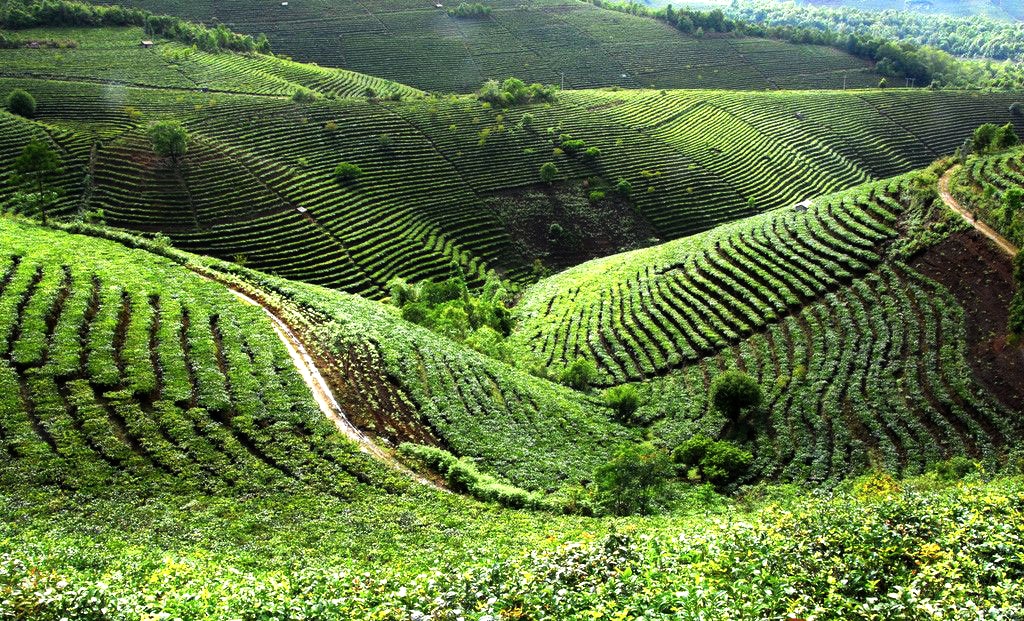
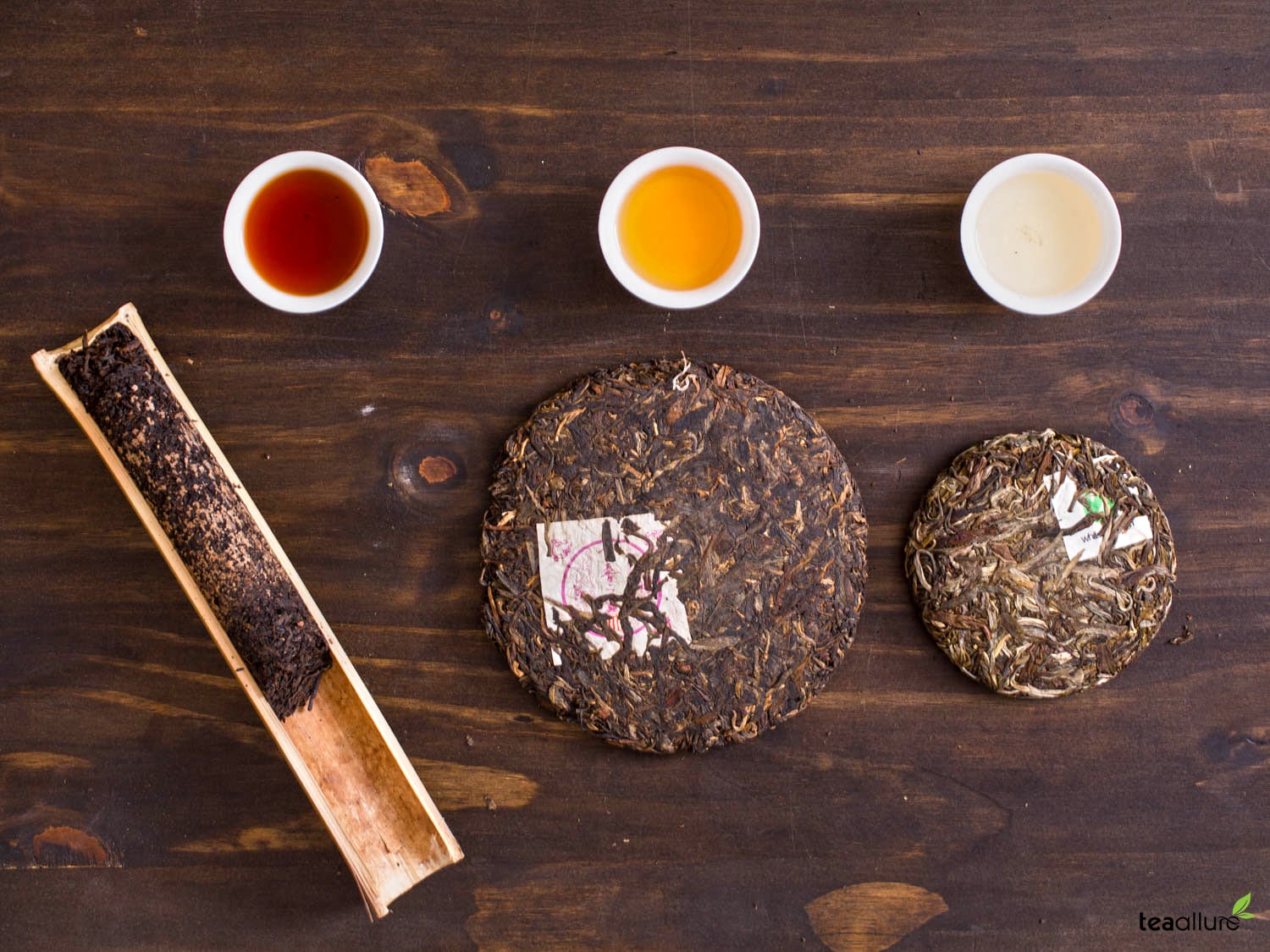

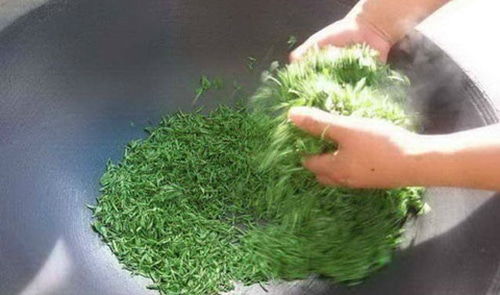

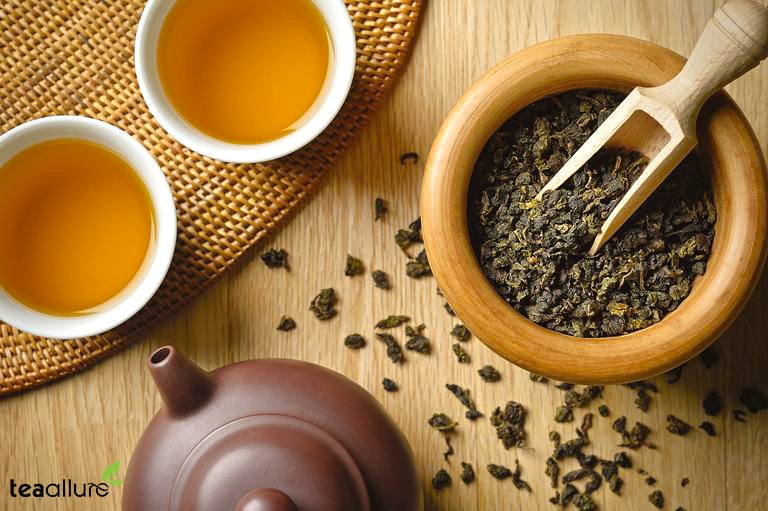

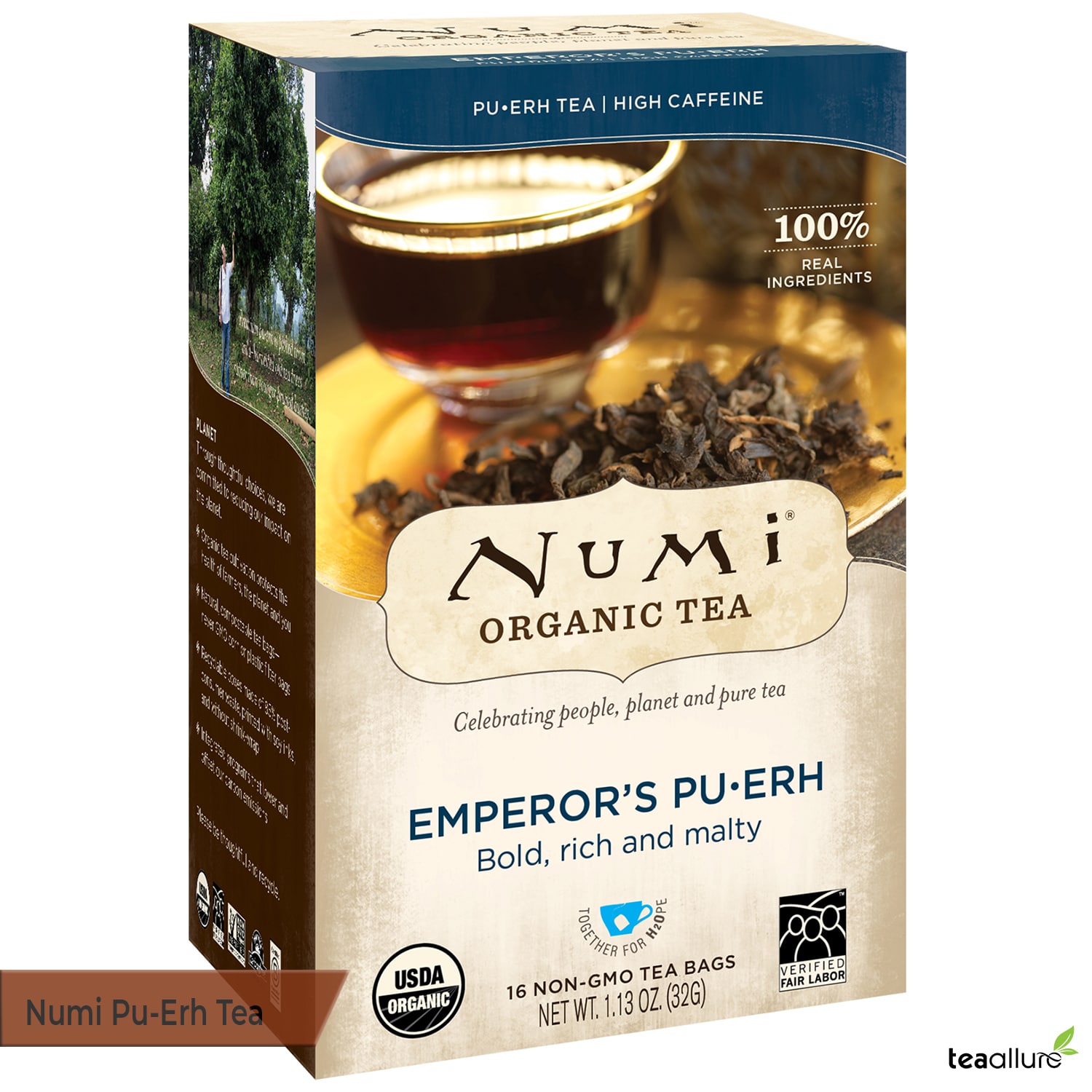
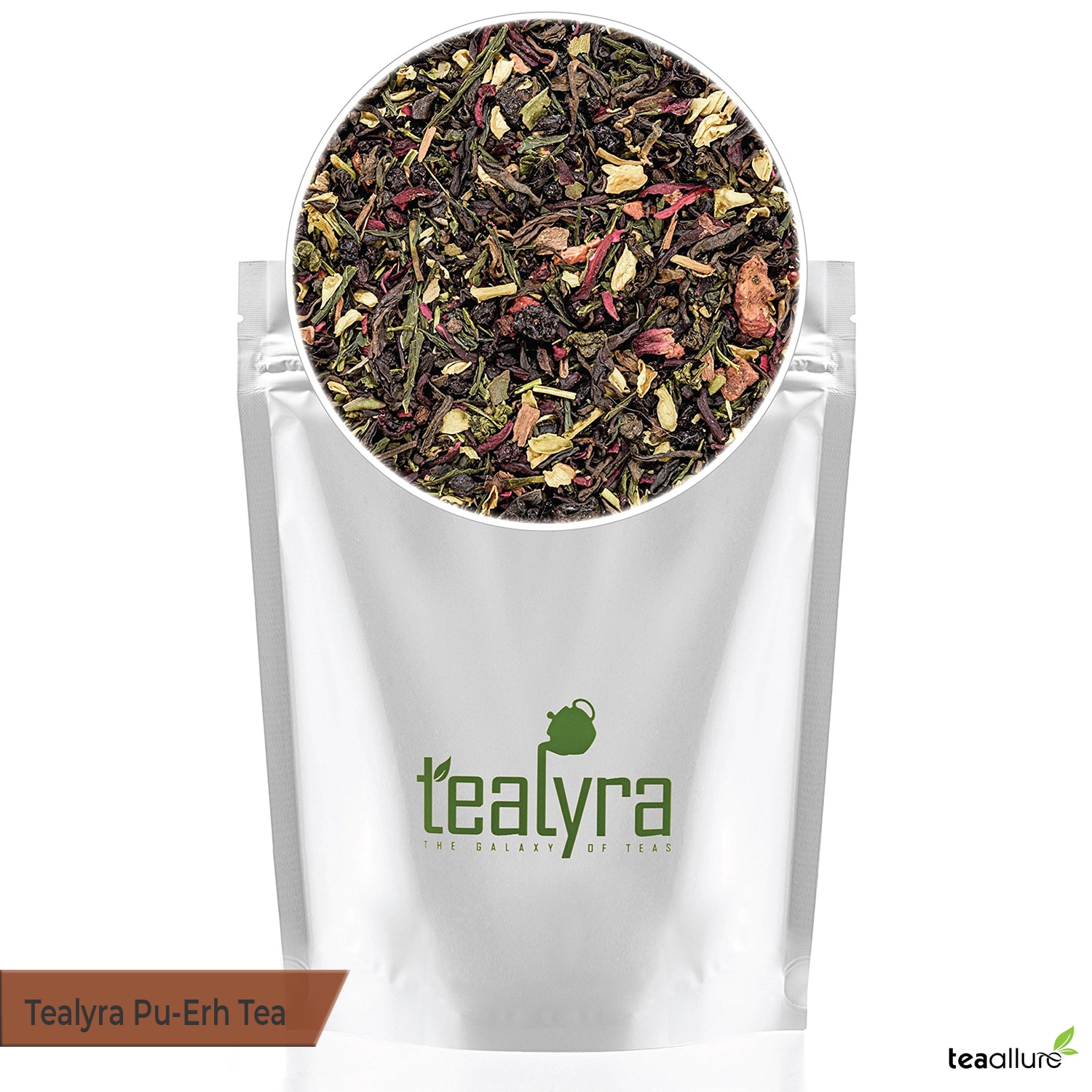
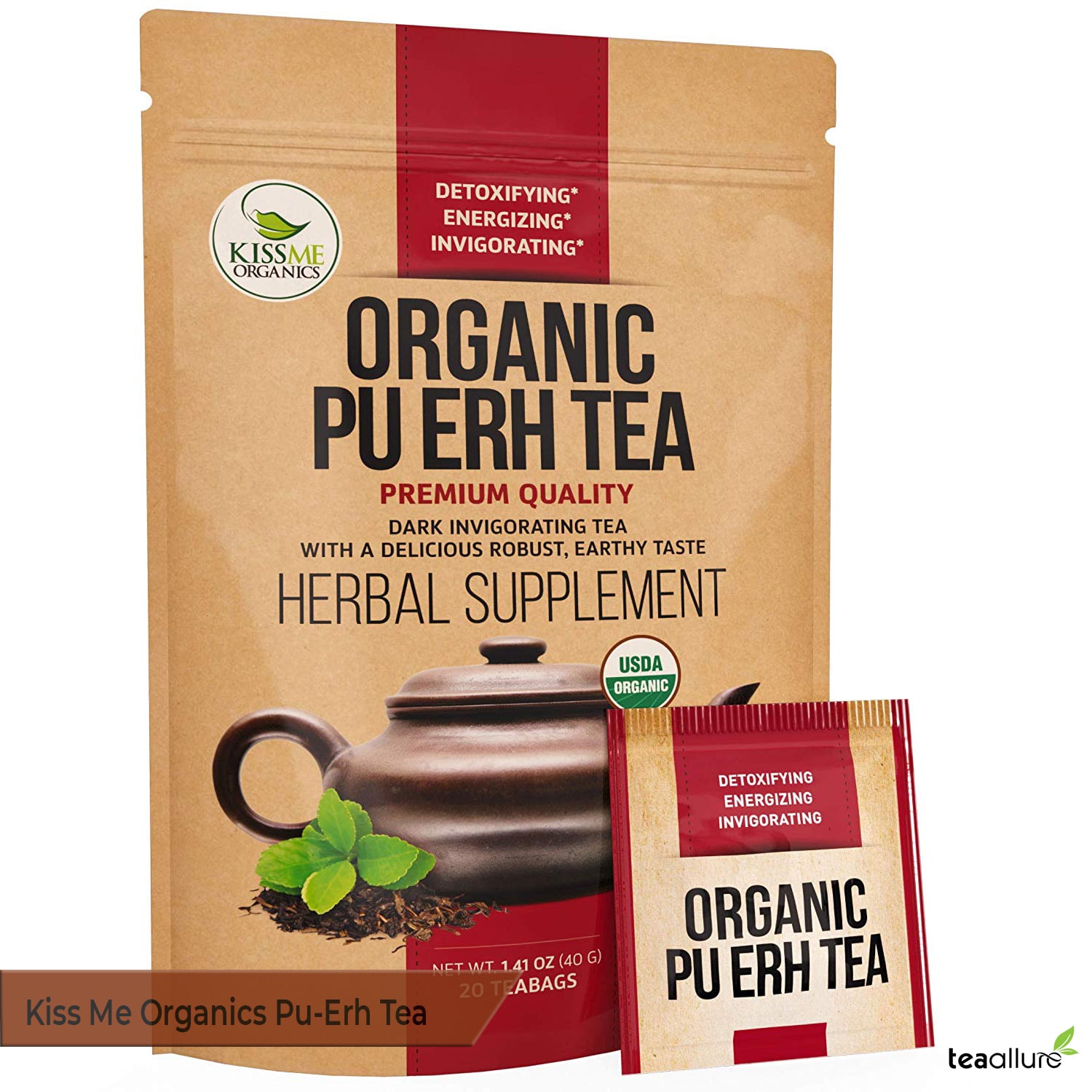
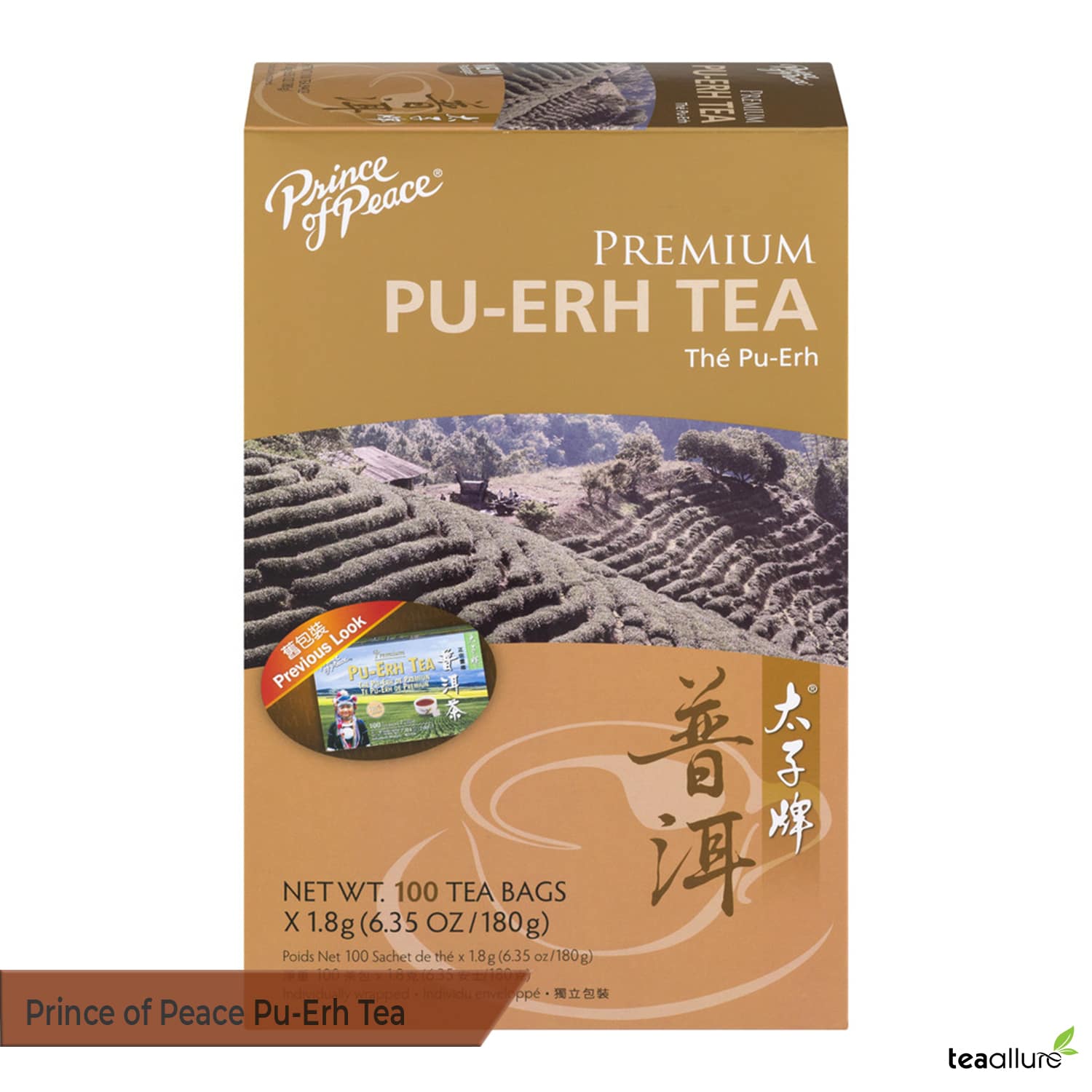
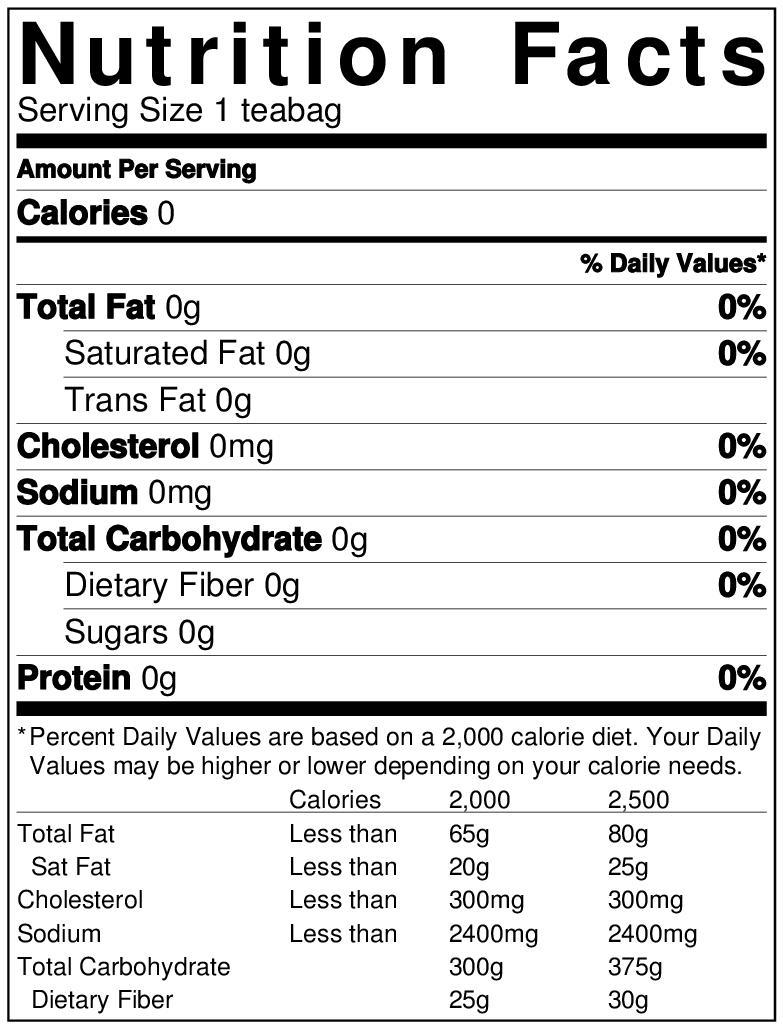
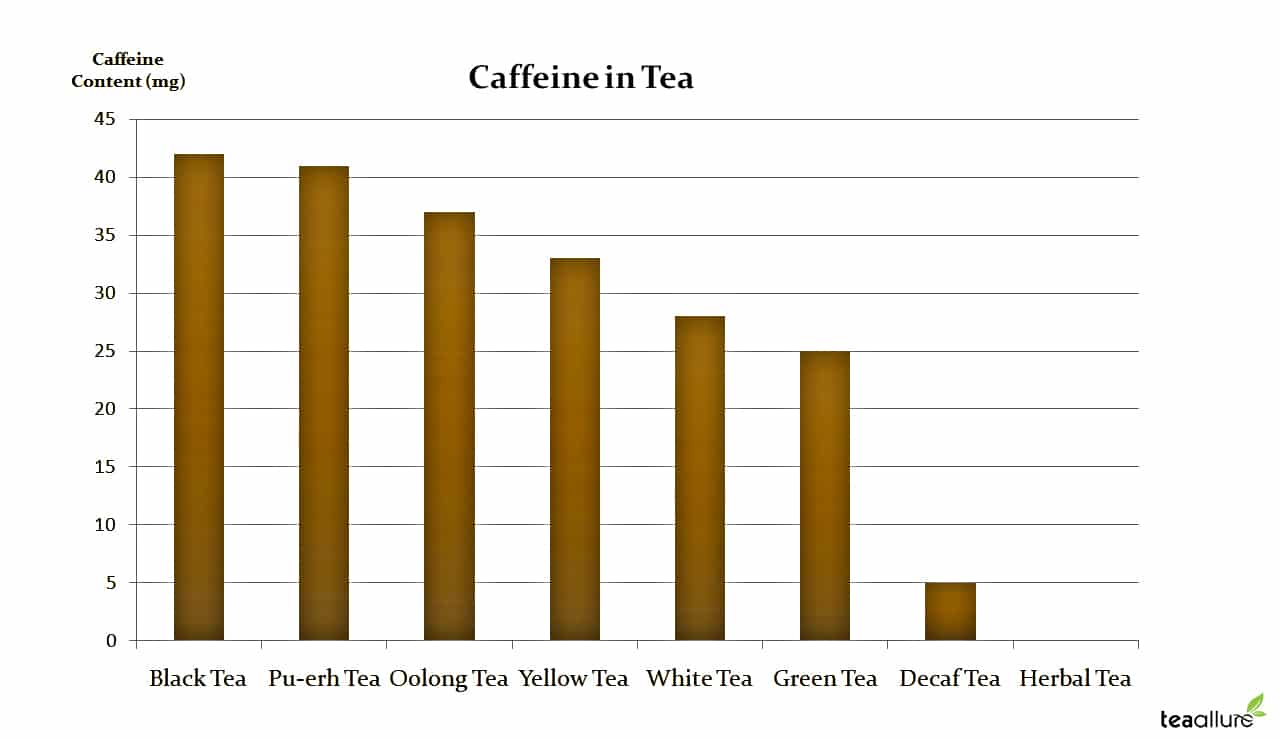

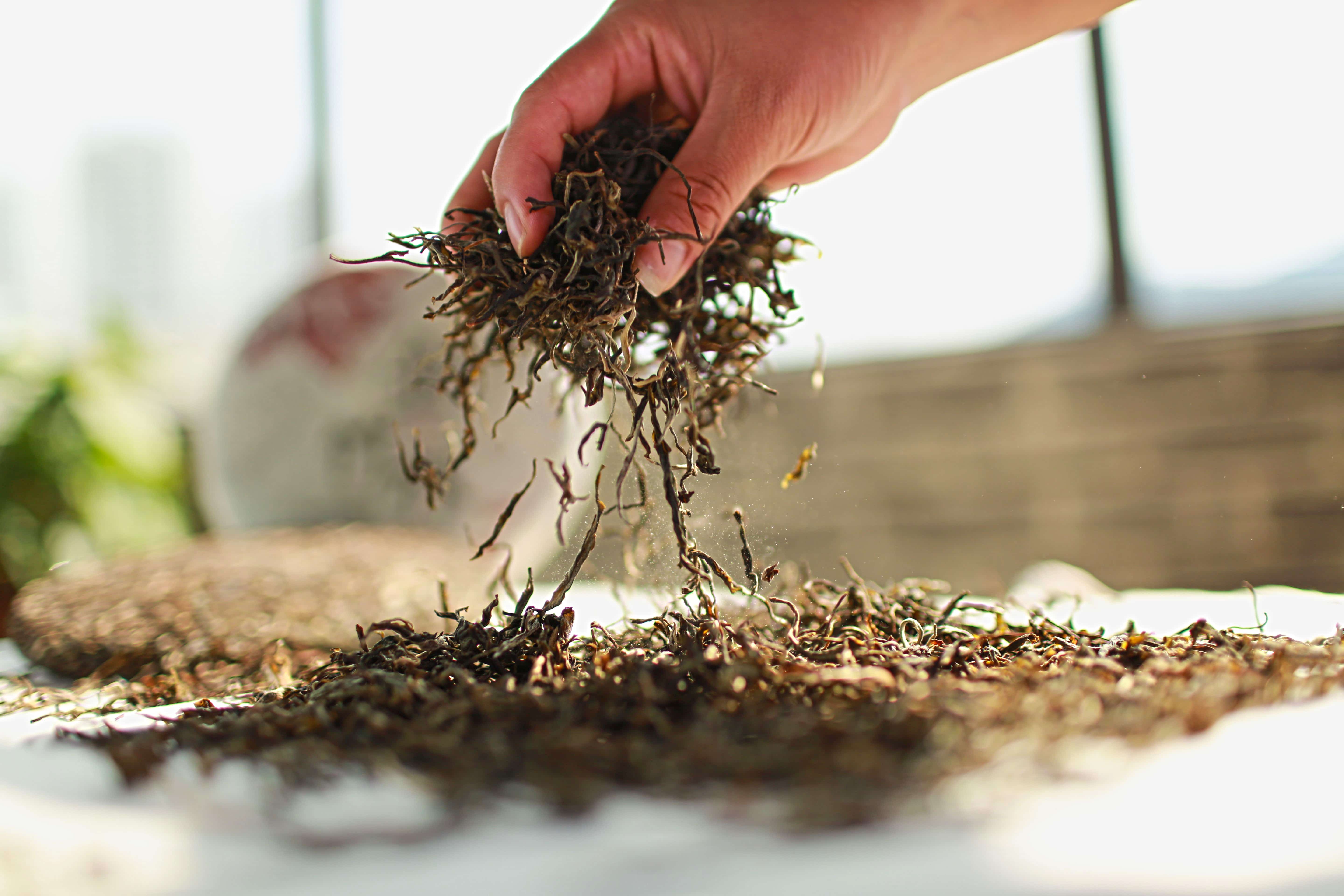
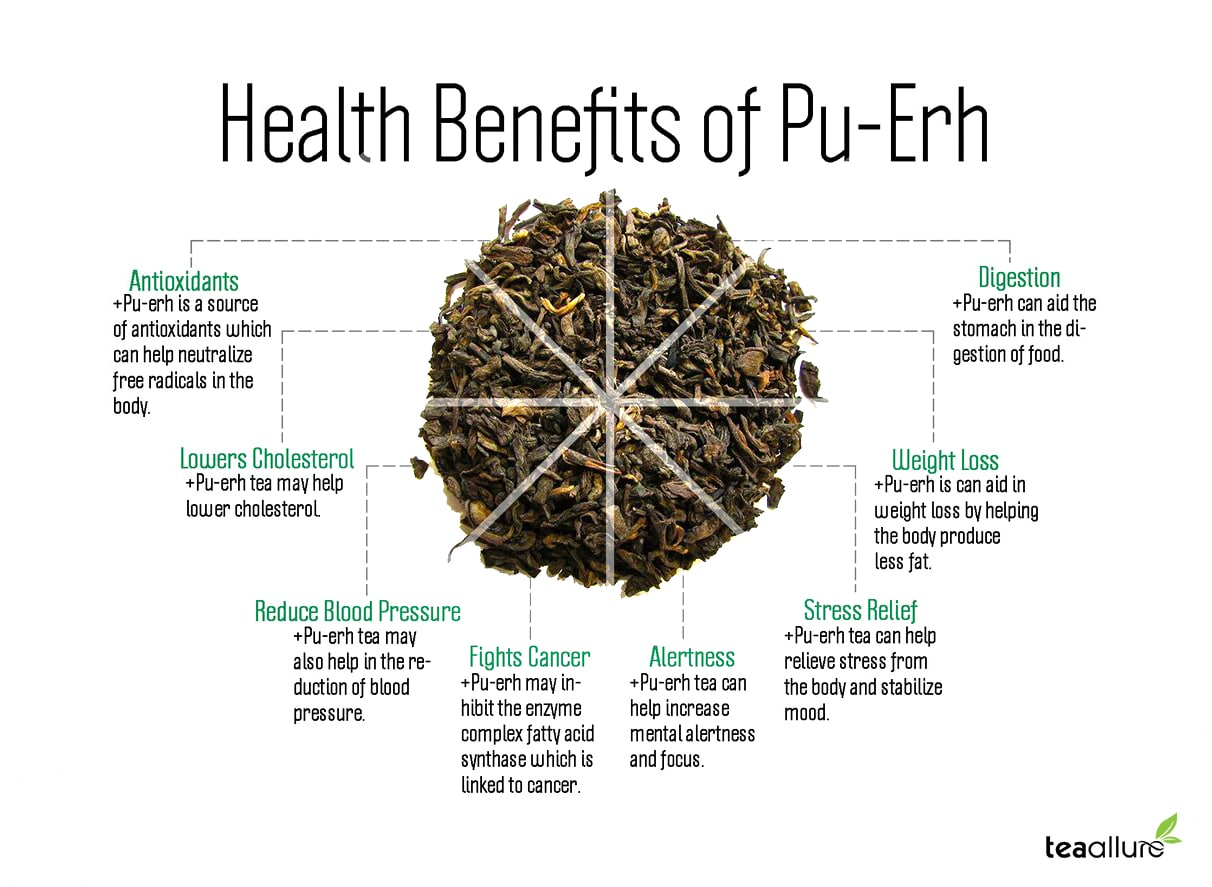
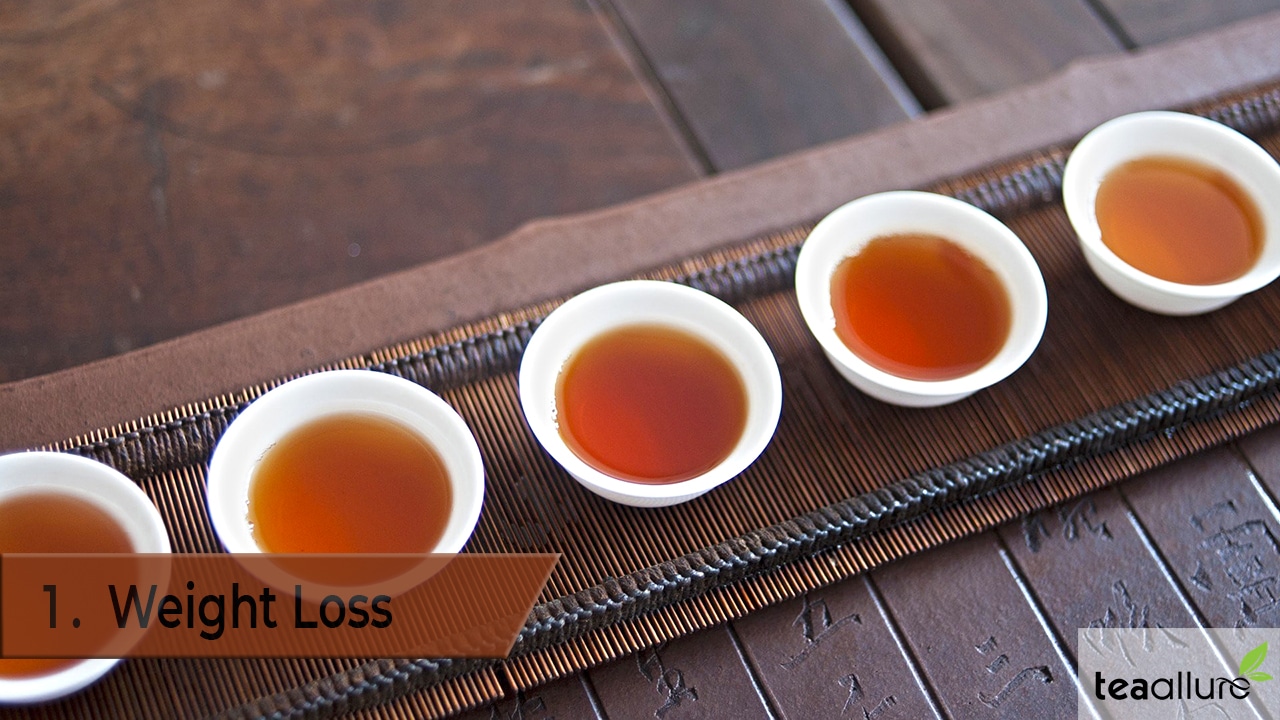

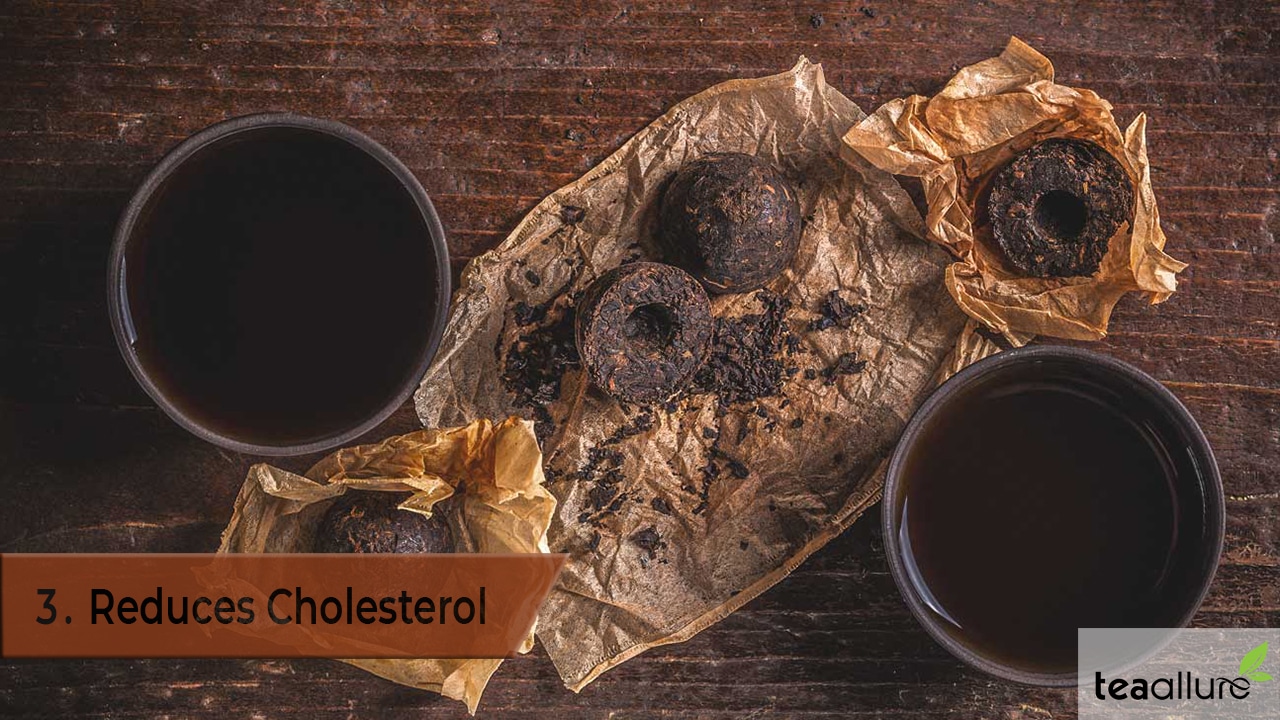
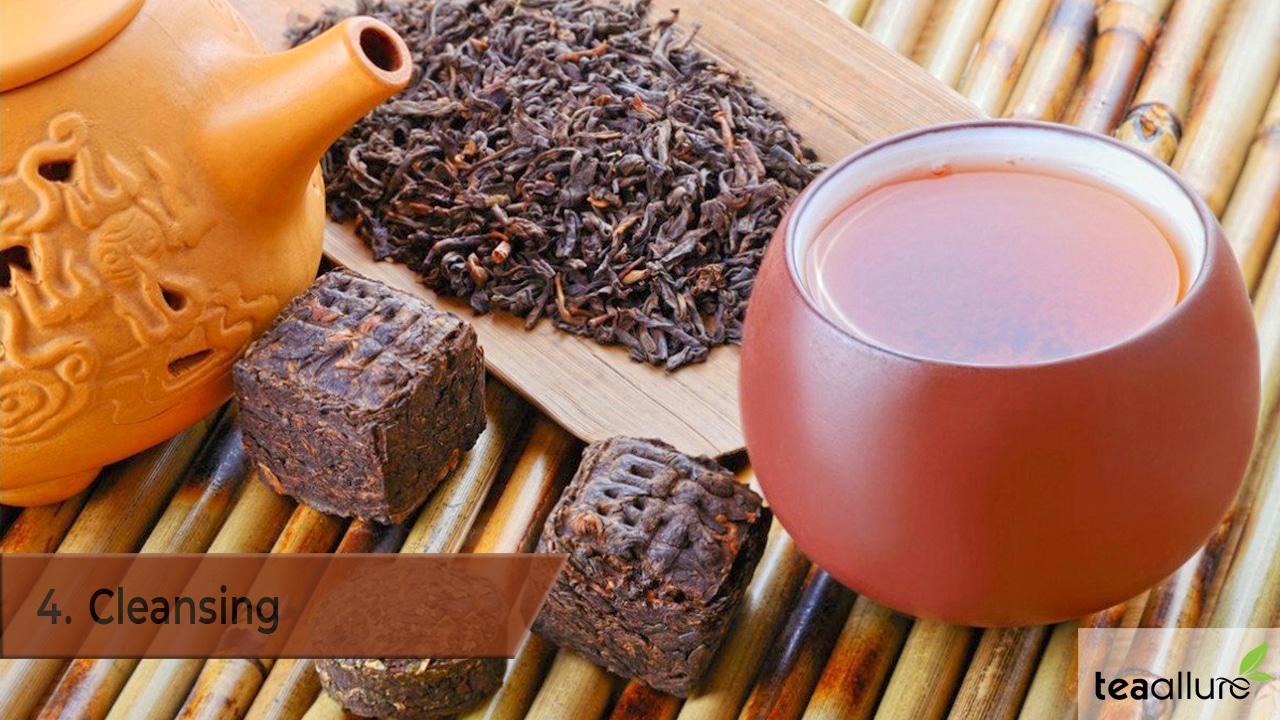
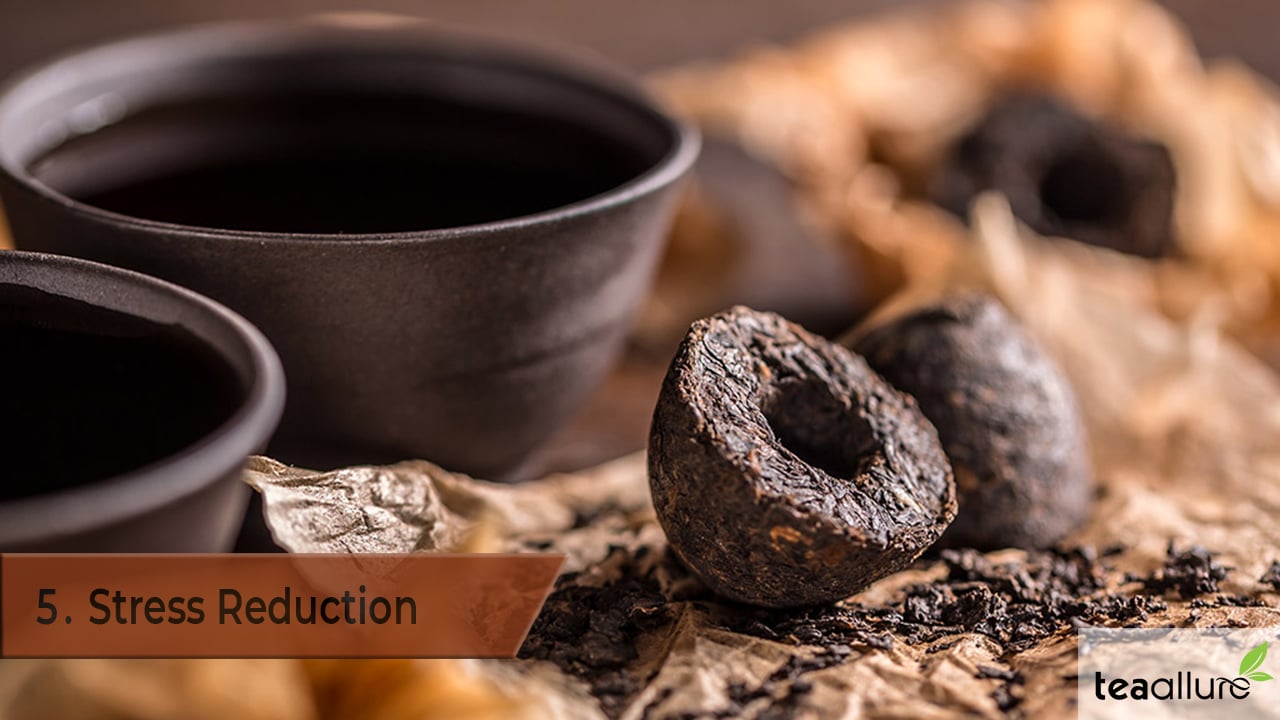

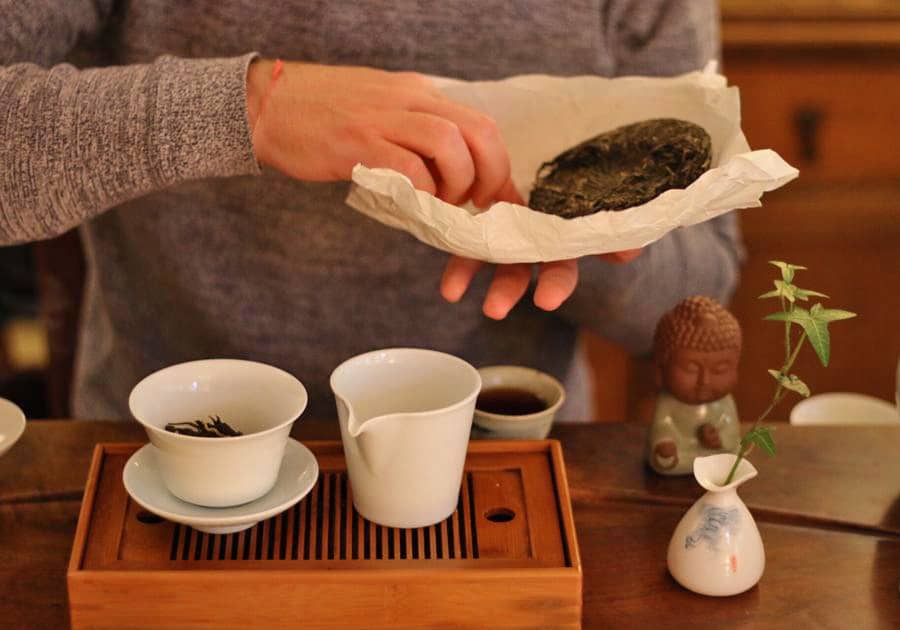
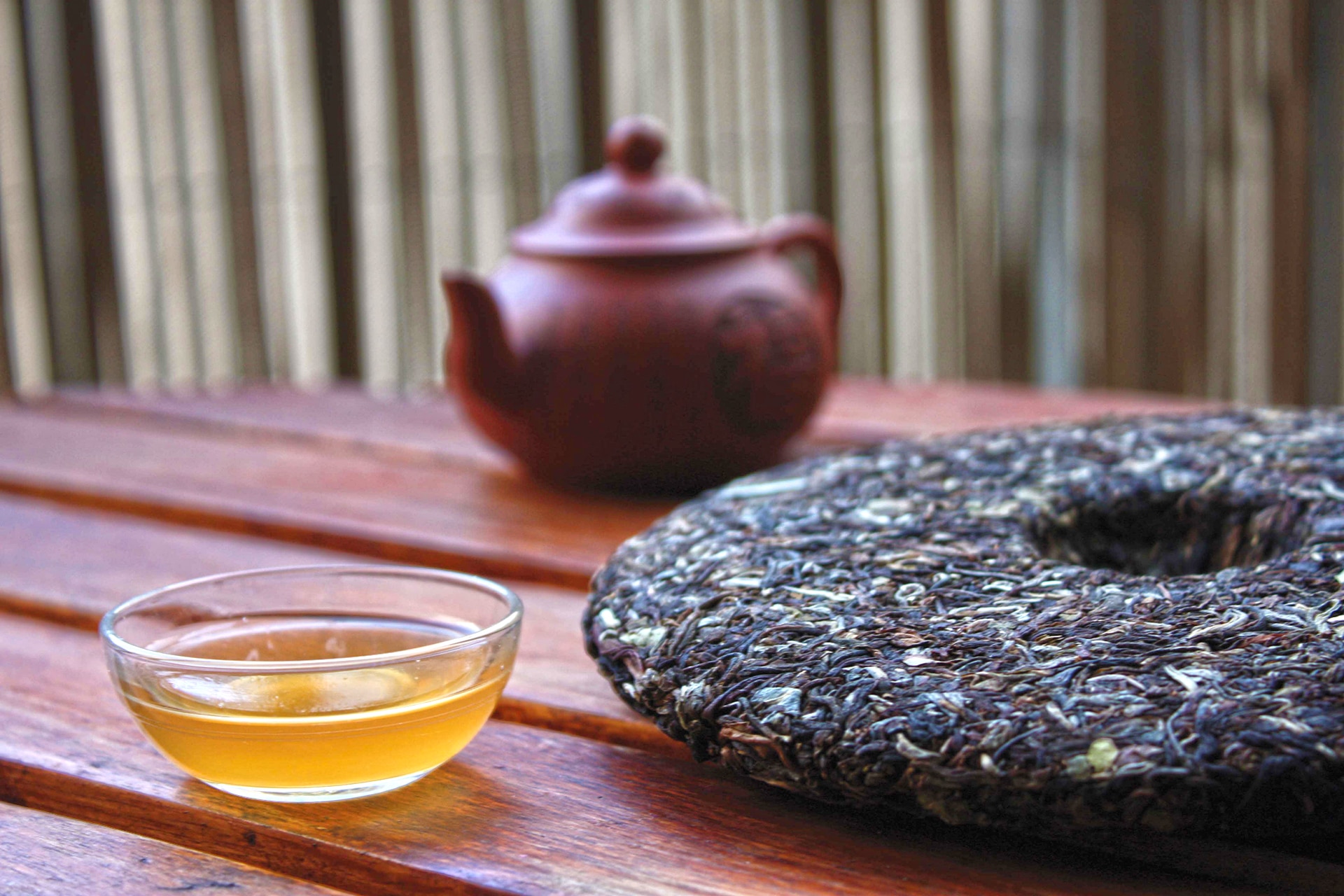
 Hi, my name is Abigail Bradley, founder of TeaAllure. Tea is my passion, and this blog is dedicated to provide all the information for this marvelous gift of nature.
Hi, my name is Abigail Bradley, founder of TeaAllure. Tea is my passion, and this blog is dedicated to provide all the information for this marvelous gift of nature.